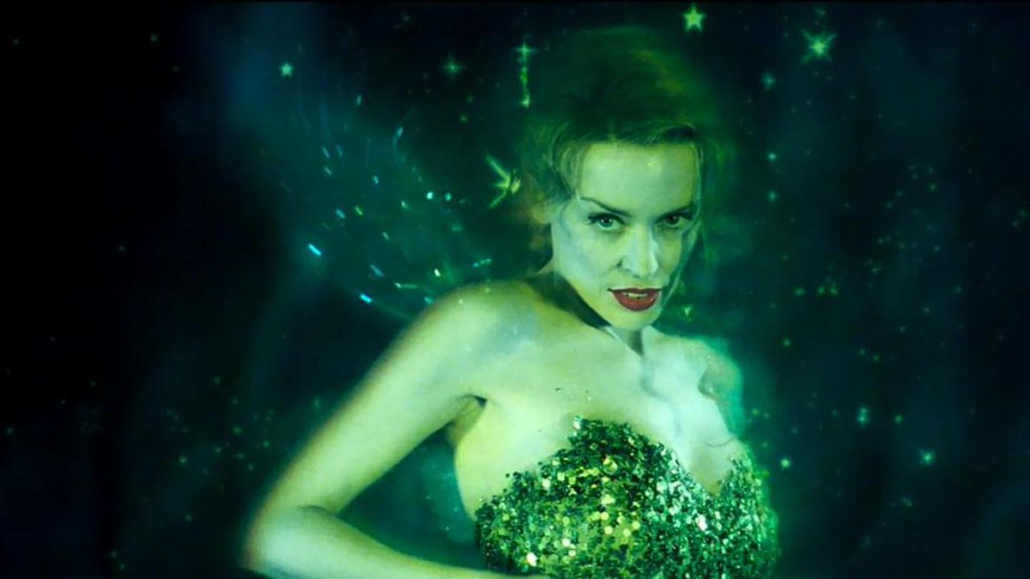Animated: “Moulin Rouge!” sprinkles the pixie dust of performance

I’m a fan of all things “Moulin Rouge!,” and I visited the actual Moulin Rouge earlier this year in Paris. This summer, I saw a performance of “Moulin Rouge!” at Hollywood’s Pantages Theater — a show I highly recommend, by the way, if you’re looking for something to do in Los Angeles. Being the narrative studies major that I am, I just had to figure out the differences and nuances of storytelling about the Moulin Rouge, so I ended up re-watching the 2001 film “Moulin Rouge!” starring Nicole Kidman and Ewan McGregor.
You might be thinking: none of these versions of the “Moulin Rouge!” have anything to do with animation or anything like that — they all have real people. That’s mostly true, except the fact that in the film, there’s a part where a seemingly animated green fairy version of Kylie Minogue flies around as an absinthe-induced hallucination.
Let’s back up a bit. For more context, I have to provide some basic summary.
The 2001 film “Moulin Rouge!,” directed by Baz Luhrmann, centers on the doomed love story between a young writer named Christian (McGregor) and a beautiful cabaret performer named Satine (Kidman). In the beginning, Christian arrives in Paris to participate in the Bohemian movement. While he’s there, he gets roped into a scheme by Bohemian Frenchman Toulouse (John Leguizamo) to sell Toulouse’s show to the Moulin Rouge. Christian is told to pitch the show to Satine, the Moulin Rouge’s star performer, and convince her of its potential.
The Moulin Rouge, however, is going bankrupt, and the performers need a big investment in order to sustain their livelihoods. Here comes the story’s primary antagonist: the Duke of Monroth (Richard Roxburgh). The Duke can provide that investment — at the cost of Satine’s free will. Smitten with Satine, the Duke wants her to be his.
The Moulin Rouge’s owner, Harold Zidler (Jim Broadbent), promises Satine to the Duke. The Duke is supposed to meet Satine in her dressing room, but then Christian arrives instead. Christian is mistaken for the Duke of Monroth and sings a love song for Satine.
The two fall in love, but after it’s revealed that Christian is just a poor writer, the two must keep their relationship secret in order to avoid risking the Duke’s investment to save the Moulin Rouge. At some point, it’s revealed that Satine is gravely ill. At the end of the film, the Duke is defeated, but just as the two lovers reunite, Satine dies.
As a whole, the story is pretty tragic. There are moments, though, where the film is a celebration of the bohemian spirit. The scene in question — the one that’s most relevant to the subject of “Animated” — is when Christian and Toulouse’s band of performers consume absinthe. As a result, they collectively begin to hallucinate.

Part of that hallucination involves seeing the iconic “Green Fairy” (Kylie Minogue) who, of course, is a real person, but digitally rendered as a miniature sparkling green fairy, one that looks very much like Tinker Bell if the character was further sexualized. Mel Bondfield at the National Film and Sound Archive of Australia writes that Minogue’s performance of the “Green Fairy” is “a blurring of the line between the playful innocence attributed to a fairytale character and the sex appeal of a captivating siren.”
For me, the “Green Fairy” represents the dual sides of the Moulin Rouge in this movie. Sometimes the Moulin Rouge and its shows are an elaborate, wondrous spectacle. Other times the place is a dark reminder of the objectification of the performers’ bodies as part of that same spectacle.
On another level, the “Green Fairy” appears to be a symbol of the period in Paris’ history captured in the film. The whole musical hallucination sequence seems just ridiculous at times, but there’s a certain kind of fantasy involved. If the “Green Fairy” is akin to a fairytale, then so is “Moulin Rouge!” as a love story. Needless to say, “Moulin Rouge!” is a celebration of the bohemian spirit: as the Bohemians sing in the film, it’s about living life with “freedom, beauty, truth and love.”
Technically, though, I just wanted to look at the use of the “Green Fairy” in “Moulin Rouge!” to explore how animation, visual effects and/or digital arts as a whole can be used in subtle ways for live-action films. That play on a real person is a mirror for the central plot: the way that Satine seems to exist as a sexualized, unreal object for the Duke to possess. She is a fantasy for him. With the use of digital pixie dust for a real-life person, the movie seems to espouse those messages about the costs of being a performer on the stage and being a performer for life.
“Moulin Rouge!” is about the concept of “performance” being magical. Through the motif of the show, the story looks at different themes from class division to feminine agency. It’s escapism and honesty all at once. As critics have written, “Moulin Rouge!” is campy—it pokes fun at shows while depicting one. As others write, it’s also full of “excess.” The “Green Fairy” is an element in which that comes to light. Since 2001, the “Green Fairy” symbol has taken on a life of its own, from being featured in “RuPaul’s Drag Race” season 14 to being written about in various thinkpieces across the Internet (like this one).
Even if I can’t relate to the absinthe drinking that induced the fairy’s appearance, watching the film made me miss being at the Moulin Rouge in Paris — not so much the city, but how I felt while I was there. Not worrying about assignments, careers or my future, but just getting lost in the show, feeling like I was part of the magic.
Valerie Wu is a senior writing about animation and digital arts from a contemporary perspective.

